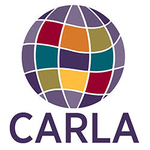Learning a Second Language through Content Instruction: Pedagogical Implications for the Mathematics Class
Session Type
Paper/Best Practice Session (1 hour)
Immersion/Partner Language(s)
French Immersion
Context/program model
One-Way Second/Foreign Language Immersion
Level
Middle School/Junior High
High School
Program Summary
This session focuses on how to integrate language in content areas such as mathematics. Our study examined how immersion students use their L2 to explain mathematical concepts and ways that this can be improved. Pedagogical implications that further integrate language in content areas will be presented through several examples.
Abstract/Description for Paper, Discussion, and Laptop Poster presentations
Language development in content areas in French immersion (FI) has been the focus of research and writing over the last 20 years (e.g., Christian, 1996; Cormier & Turnbull, 2009; Gibbons, 1993; Lyster, 2007; Pierce, 2000; Seewald, 2007). This presentation will explore how Canadian immersion students talk about their understanding of mathematical concepts in their second language (L2). Particular emphasis will be placed on the pedagogical implications related to FI students studying mathematics in their L2.
A mixed methods design integrating discourse analysis and descriptive quantitative analysis was used to shed light on how students work through particular math concepts. Small groups of Grades 3, 6 and 9 students were video taped while working through mathematical games relating to probability. Discourse analysis data were analyzed and comparisons were drawn among the different age groups to explore the similarities and differences among the groups. Particular attention was placed on how each grade level communicated their understanding of mathematical concepts related to probability.
Our results indicate that, even though Grades 7 and 9 immersion students had a larger repertoire when compared to Grade 3 students, their repertoire was still limited. Moreover, Grade 3 students use four times more language when working though the activities and relied heavily on stories as a way to construct meaning and show understanding. We thus suggest that counterbalanced instruction (Lyster, 2014), extended input (Swain, 1993), oral corrective feedback (Lyster, 2001), scaffolding, rethinking obligatory language and story telling (Egan, 1989) as ways to integrate language instruction in mathematics.
This session will focus on describing the pedagogical implications that can further enhance second language development in content-area classrooms such as mathematics. Concrete examples will be given.
Lead Presenter/organizer
Josée LeBouthillier, Second Language Institute of Canada, University of New Brunswick
Role/Title
Research Associate
State (in US) or Country
CA
Co-Presenters
Renée Bourgoin, Second Language Institute of Canada, University of New Brunswick
Role/Title
Faculty Associate
State (in US) or Country
CA
Paula Lee Kristmanson, Second Language Institute of Canada, University of New Brunswick
Role/Title
Professor
State (in US) or Country
CA
